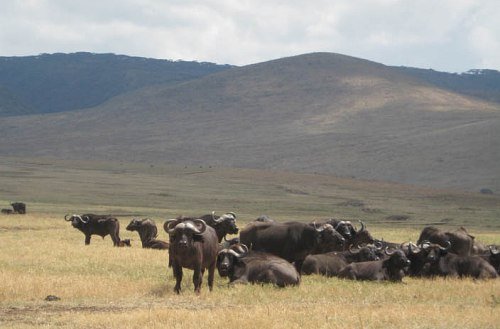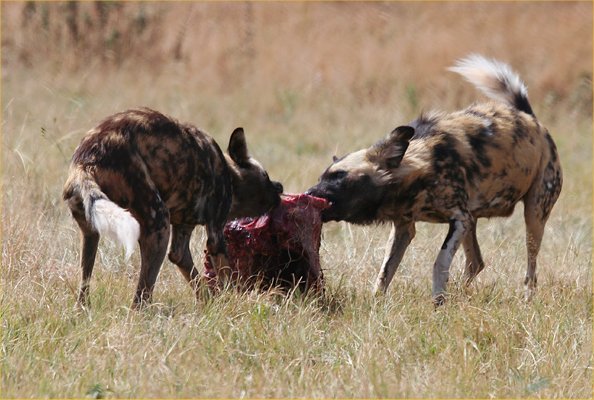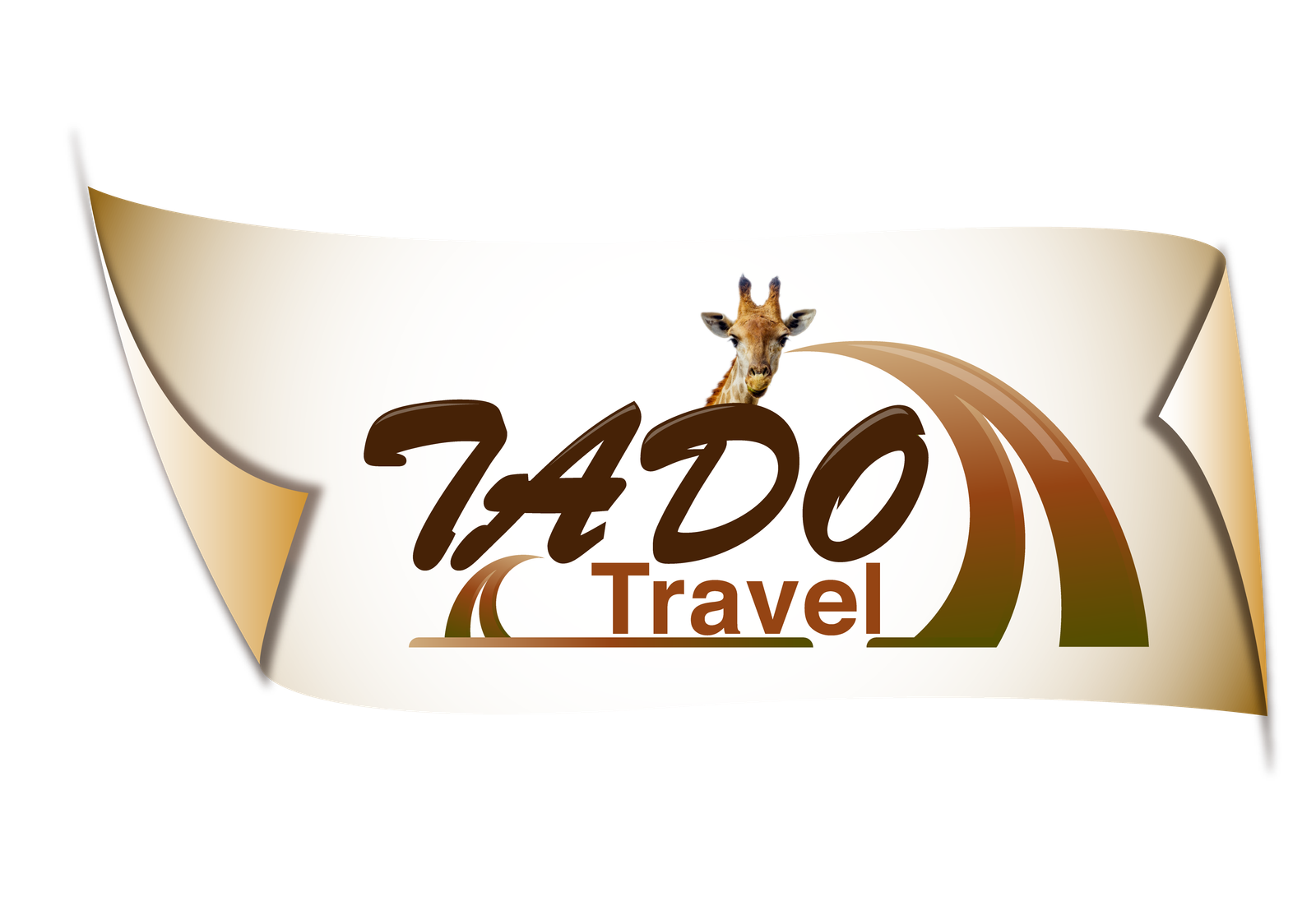Selous Game Reserve
The Selous Game Reserve is a protected area in southern Tanzania. It covers a total area of 50,000 km2 (19,000 sq mi) and has additional buffer zones. It was designated a UNESCO World Heritage Site in 1982 due to its wildlife diversity and undisturbed nature. Some of the typical wildlife of the miombo inhabits the reserve, such as African bush elephant, black rhino, hippopotamus, lion, East African wild dog, Cape buffaloes, Masai giraffe, Plains zebra, and Nile crocodile. Permanent human habitation is not permitted within the reserve. All human entry and exit is controlled by the Wildlife Division of the Tanzanian Ministry of Natural Resources and Tourism
Interesting places in the park include the Rufiji River, which flows into the Indian Ocean opposite Mafia Island and the Stiegler Gorge, a canyon of 100 metres depth and 100 metres width. Habitats include grassland, typical Acacia savanna, wetlands and extensive Miombo woodlands. Although total wildlife populations are high, the reserve is large and densities of animals are lower than in the more regularly visited northern tourist circuit of Tanzania. In 1976, the Selous Game Reserve contained about 109,000 elephants, then the largest population in the world. By 2013, the numbers had dropped to about 13,000 – including a 66% drop from 2009 to 2013. Sources blame corrupt politicians, officials and businessmen who help poachers.
Most of the reserve remains set aside for game hunting through a number of privately leased hunting concessions, but a section of the northern park along the Rufiji River has been designated a photographic zone and is a popular tourist destination. There are several high end lodges and camps mainly situated along the river and lake systems in this area. Rather difficult road access means most visitors arrive by small aircraft from Dar es Salaam, though train access is also possible. Walking safaris are permitted in the Selous, and boat trips on the Rufiji are a popular activity


